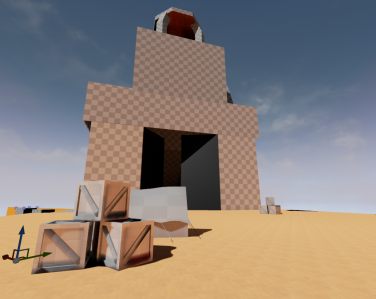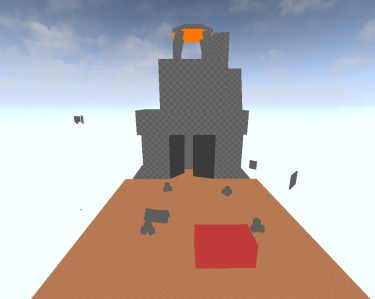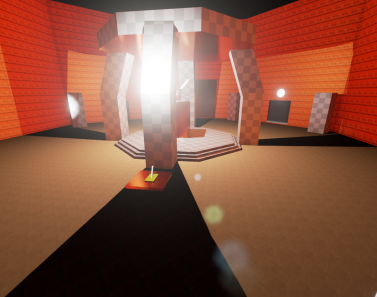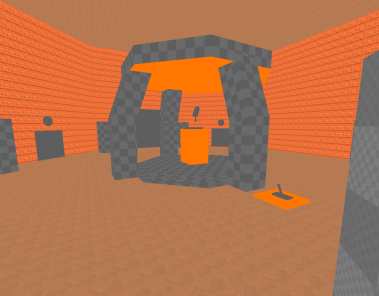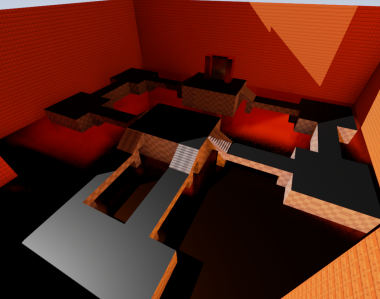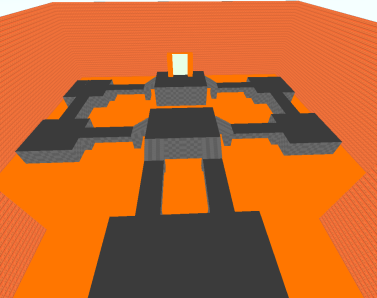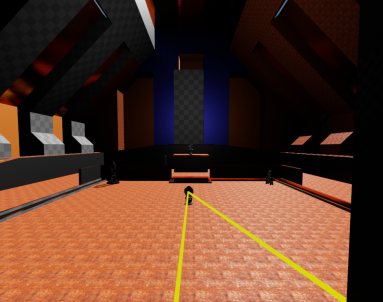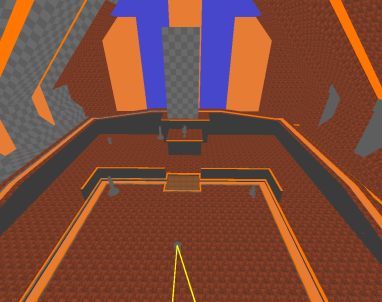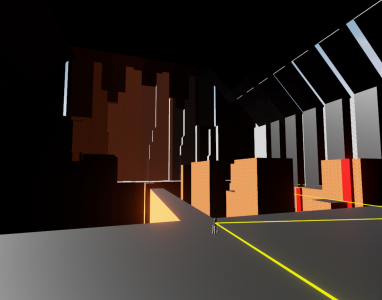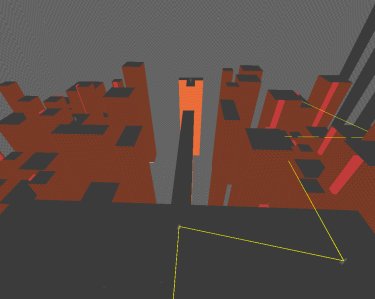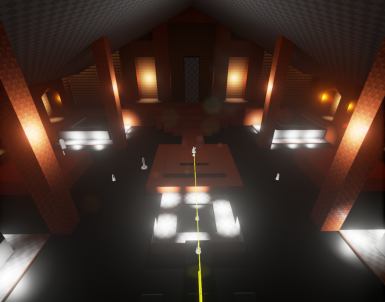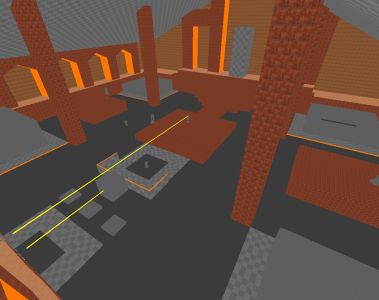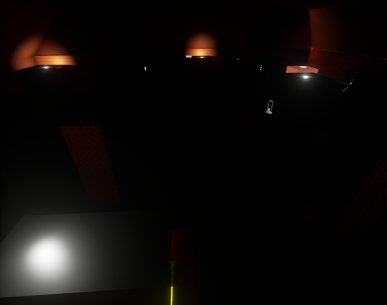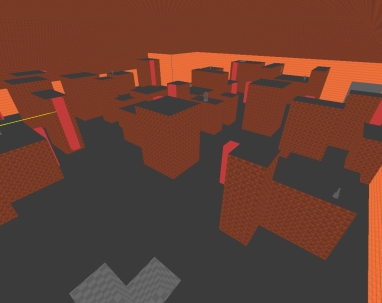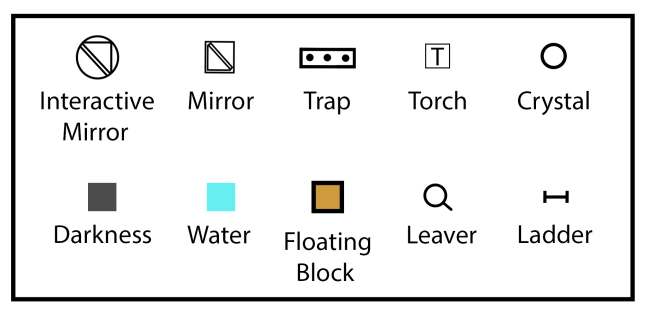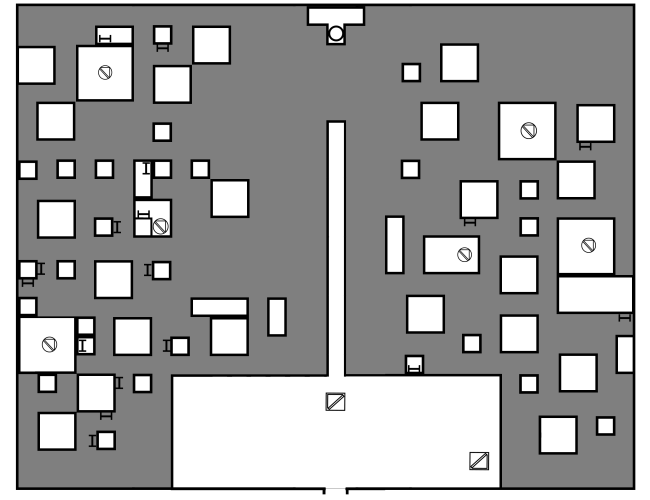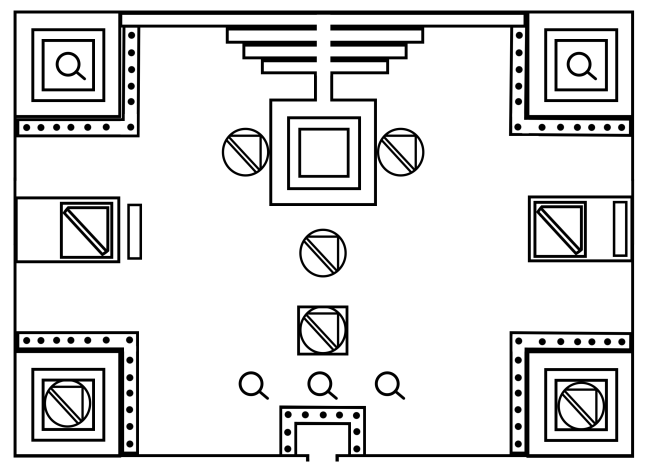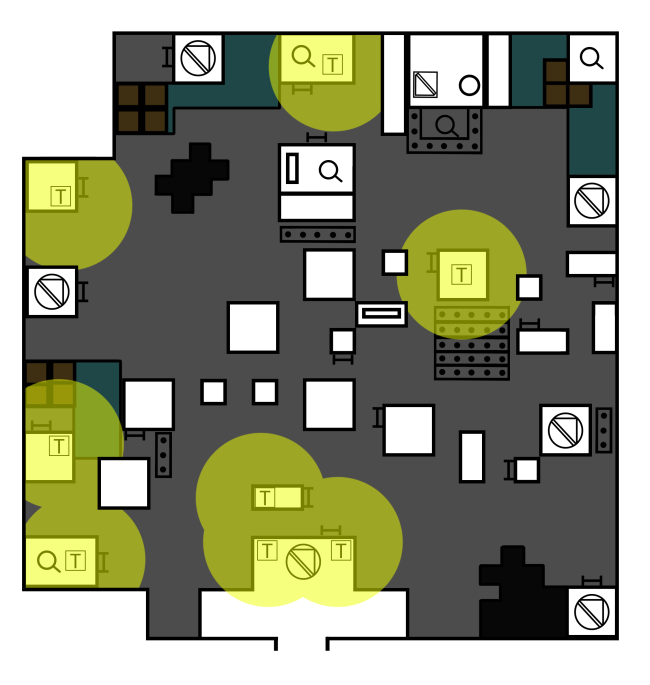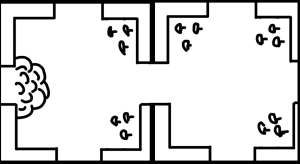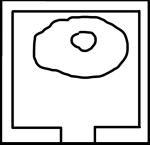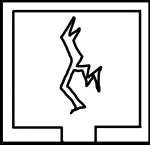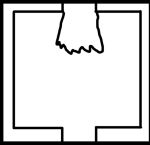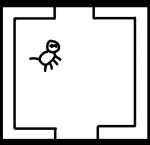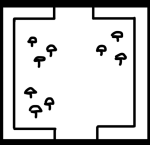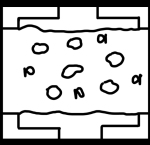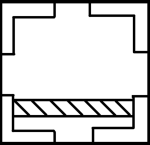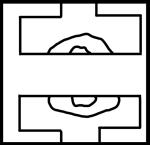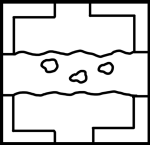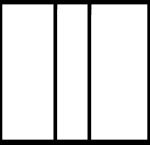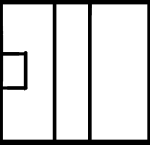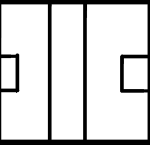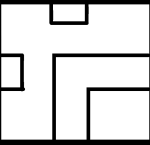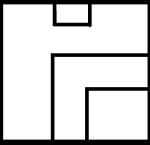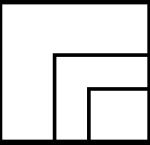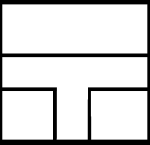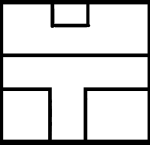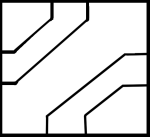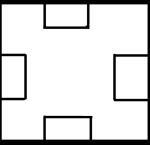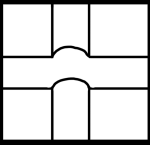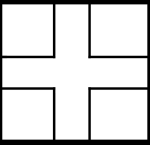For the coming weeks my group from the course “Advanced Game Design” will be working on a board game of our own. The game idea that we came up with is a round-based exploration game called Grottan (Working Title). The core idea is similar to games such as Betrayal and the Dungeons and Dragons board games where the players get to explore a collapsed cave using tiles. The final goal of the game is to find one of the three different exits by helping or killing your teammates.
The Board
Some things that we discussed were how we would create the board where the players would actually play the game. Some thoughts we discussed were for example if we would only use tiles to let the players build a level however they want or if there should be a board which the players would use as a boundary of where they could place the different tiles. Also, there were thoughts of having different amounts of exits of the cave for example. This would give the players the chance to judge the different risks of getting there as well as having to complete a specific task to get out.
The players
Each player could possibly get to choose a character card and a character figure. On the character card there would be represented the players strength, agility, wisdom, luck and life. Also, the card would include the character’s name and which alignment he or she would have. These alignments would represent how willing the character is to help others to make it out of the cave or if he/she is selfish and only cares that he/she will get out.
Items
Items are different objects the different characters have at the beginning of the game. These objects work as special perks that may be used to overcome the different challenges in the game. Also, while walking through the different caves the players may find different items that may aid them through their quest for survival.
Food
The players will have to eat food each round to be able to get stronger. Although, as the group is stuck in a cave with a limited amount of food it is really hard to get completely full. This results in that the players have the chance to steal food from each other as well as from the main pile of food. The food could be represented as cards and would be placed face down in a deck. On each card there would be different amounts of food. The food cards would only be picked up if the players make it onto a “food-tile”. As there are different food-types the players will receive perks for the strength and agility traits, as well as the players overall life. The further in to the cave the players get the lower their stats will get which means that they have to eat more food which will get harder every turn as the food will slowly deplete.
Chaos
In some tiles the player will enter a larger cave area. In this cave there could exist the possibility of having to take a random “adventure card”. On these cards there could be different traits such as different small monsters that would attack the players. The cards could also include different types of catastrophes which would occur that round for that tile. Some examples of these could be for example earthquakes, flooding, lava or cave-ins.
Backstabbing might be quite normal while playing this game as well. The reason for this is for example if one of the players has picked a character with an alignment of only wanting to survive by him/herself the player could choose to kill other players through the game by for example pushing others down cliffs for example. This will give the game a feeling of uncertainty as you will never know who is on your side or who will try to stab you in the back when the time is right.
If a player ever dies they will not be thrown out of the game. Instead that player will have the chance to turn into a monster of some type. The new goal of the player will be to kill the other players before they manage to get out of the cave. This will give the game a second phase and will create a feeling of anxiety and terror.
MDA for the game
| Mechanics |
Dynamics |
Asethetics |
| If the player has to low stats in any of the traits there is a chance that he/she will have to rely more on dice. (Although, it could be added that the players could do special side-quests which would upgrade their stats.)Also, it can get very frustrating not knowing who might have stolen food from the food pile without the other players knowing. |
-Having a hard time climbing and swimming for example-Not knowing who’s steeling food |
Frustration |
| Monster players- as the players die new characters will start to exist in the game which are monsters. The goal of these characters is to kill the remaining survivors. |
-Getting terrorized by having monsters follow you |
Terror |
| If two players ever get to a tile with some type of danger a player may choose to roll a die. If the die beats a specific score he or she may try to kill the other player. The complete opposite can occure as well. If a player enters a room where another player is stuck a die can be used to check if the player can save the other players character |
-Help or Destroy |
Fear/Anxiety/Friendship/Loyalty |
| If a player walks of by themselves the character will have a couple of turns to get together with other players. Otherwise this character will go insane and will not be able to move from that tile until another player has moved there to rescue the player. |
Get lost in the cave alone and get crazy |
Insanity |
| Food increases the traits for strength, agility and life. As there is a shortage of food the players have the possibility to steal food from others or the food pile but may then loose the respect of others (this is done in secret) |
Eat food to get stronger and survive |
Survival |
| spelar kort/alignment?/ predefined cards -> har olika objects som kan vara både bra och dåliga. Tillexempel ett rep som kan användas för att klättra upp för klippor men också kväva en annan person, |
Who wants to help the others and who does not care about the othersPlayer cards- explain alignments of the players, |
Group solidarity |
| Remove tiles after moving/vision of the player- the group explores the cave by building new paths using different types of tiles but as they move the tiles behind them are removed to simulate that the players get lost in the cave. |
Visual range of how long the players can see |
The players are lost |
| If a player dies he/she will become a monster that will try to move and kill the surviving players |
Die and become a monster of some kind |
Death |
| As the food is eaten the food will get more valuable. As the food can be stolen this will give the players a hard time trusting each other of who has food and who doesn’t. There is a huge risk that the players will try to bluff their way out of telling others of how much food they have at any point. |
Faminefood equals power |
Trust |
| The players may use the food cards at any time they want. This will increase the players strength and agility for the rest of the turn. |
Eat food to survive and get strongerFood is shared between the playersFood can be stolen to get a player stronger |
Food |
These are just some examples of what the game can include and might change in the final product.

